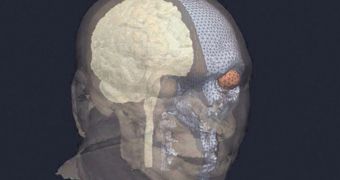According to a new scientific study, it would appear that adding special visors to the standard-issue helmets of American soldiers currently serving abroad could help reduce the incidence of traumatic brain injuries.
This condition can already be considered the hallmark of the wars in Afghanistan and Iraq, experts say, as many veterans returning home exhibit symptoms associated with it. Exposure to shock waves is one of the main reasons why the affliction develops.
In the research, experts demonstrated that adding a face guard to the helmets could deflect a large portion of the shock waves that would otherwise travel unimpeded through the brain.
This investigation is only a part of a larger cohort of studies, that have been conducted recently in an attempt to tackle issues related to traumatic brain injury, its consequences and its treatment.
Statistics from the Silver Spring, Maryland-based Armed Forces Health Surveillance Center show that more than 200,000 people serving in the military suffer from this condition, alongside some 1.5 million Americans who develop it every year.
Detailed results of the new study will be published in an upcoming issue of the esteemed journal Proceedings of the National Academy of Sciences, Wired reports.
When developing therapies against a disease, it's best if experts know the root causes that triggered it, as well as the effects that followed after onset.
In the case of this particular condition, this is difficult to do because the damage caused by explosion-generated shock waves traveling through the brain is a lot different from the one that occurs when someone falls and bumps their heads.
The research team therefore sought out to develop a very complex model of the human head, which included various types of brain tissues, the bones of the skull, and various layers of fat and skin.
Investigations were led by Raúl Radovitzky, who holds an appointment with the Institute for Soldier Nanotechnologies at the Massachusetts Institute of Technology (MIT).
In the experiments, explosions were simulated as taking place in front of the bear head, of the head covered in a standard helmet, and of the head shielded by a polycarbonate face shield.
“The face shield contributes a lot to deflecting energy from the blast wave and not letting it directly touch the soft tissue,” Radovitzky says of the results the team obtained.
“We’re not saying this is the best design for a face shield, but we’re saying we need to cover the face,” he goes on add. The expert mentions that the group also identified a flaw in the current helmet design.
“These helmets weren’t designed to stop a pressure wave; they were designed to stop bullets. Just like a football helmet wasn’t designed to stop a concussion, but to stop skull fracture,” saysAlbert King.
The expert holds an appointment as the director of the Bioengineering Center at the Wayne State University in Detroit.

 14 DAY TRIAL //
14 DAY TRIAL //